Singlehanded Sailing: The Next Level
Published on June 11th, 2014
by George Yioulos, West Coast Sailing
Year after year new sailboats enter a small and crowded marketplace. Potential customers are told this new design is the next big thing. Existing classes are advised to watch out, here it comes. Retailers are told this is the boat we’ve all been waiting to get behind and sell.
Technological improvements with materials and boat design provide many benefits to both racers and weekend warriors. Dinghy sailors now have access to carbon masts, lightweight construction methods and computer driven design…sort of. The reality is that, for the most part, we’re on 40 year old technology. For years this has simply been good enough.
The near-simultaneous launch of the RS Aero (RS Sailing, UK), the D-Zero (Devoti Sailing, Poland), and rumors of other boats like them, have piqued the interest of a number North American sailors. Clearly, something is going on in the dinghy market. On this side of the pond we might never represent the cutting edge of sailing, but we still represent a huge market from sea to shining sea. Any manufacturer serious about making a boat for the world must contend with the fickle nature of the North American sailor.
For a boat and class to be successful, a lot of things need to come together at just the right time. The boat needs to be well priced, with a manufacturer willing to invest large sums of capital to build fleets. Additionally, a global distribution system must be in place that can deliver product reliably and at low costs, and then support its customers for years. Current history tells us this is not easy, even for large, globally established fleets with prestigious regattas to their name. The marine market is littered with companies that have failed over and over to do the basics to support their customers.
All of that being said, something about the RS Aero struck me as perhaps the right product at the right time. At the very least, as a dinghy sailor and retailer, I had to pay attention. A UK based company, RS has grown to a significant presence in North America in the last decade. There are now thousands of RS boats sailing, with dozens more in containers arriving yearly. RS is probably not as organized as the Hobie Cat Company, but they are both timely and helpful, spirited and honest in their efforts to grow dinghy sailing.
As pre-orders started to roll in for this Aero, a boat that no one had even seen, I realized I needed to get on a plane to see what this boat was all about. Would I leave feeling like my customers with deposits already paid would be very happy indeed? Would it be more than a flash in the pan? Could the Aero be that boat all over again, like the Laser that really started it all?
I’ll cut to the conclusion to save you time: No, it’s not. It’s more.
If you are looking for a magic bullet that changes the physics of sailing an unstayed, cat rigged boat upwind, well, nothing changes that you have to hike. If you are hoping for modern composites to eliminate any twitchiness downwind, this might not be your revolution… Yet sailing the Aero is unlike other boat I’ve evaluated before. It’s a designer’s brew of lightweight construction, precise craftsmanship, and clever design that allows for high quality production in multiple locations. While it’s still a single-person fiberglass dinghy, after a day on the water it’s more an extension of the sailor themselves than any other non-trapezing boat I’ve sailed. Those who placed pre-orders are not going to be disappointed. Here’s how it went.
Weather Conditions:
We sailed for 4-5 hours in a variety of conditions. With air temperatures in the mid-to-high 50s and cool water, I was sporting a drysuit for the first time in my life. Breeze started out a nice 10-12kts for the first hour, building a bit to 14kts with puffs a bit higher. It then died in the later afternoon down to 4-7 before building back up in the late afternoon to mid-teens. The tide was ebbing when we started and increased throughout the day. Those UK tides are brutal. There was some chop from the wind and tide, but waves were never bigger than 1-2ft. It was an ideal day to try out the boat in slow and fast modes, upwind and down.
Launching:
One of the main talking points about the boat from both testers and the manufacturer is its lightness. At 75lbs, the Aero is about half the weight of the average sailor in the cockpit. The boat is easy to move about on a dolly or trailer, and I’m told two of them can stack on the roof of a car (although I’m not sure many customers would ever actually do that). It’s nice that the sail is on a halyard and the mast is so simple to step. The sides are also easy to grab on to, and I’ve seen video of people carrying it by the hiking strap and mast, but I didn’t try this. Lightweight is nice, but frankly rigging and launching any small boat with a big rig in decent breeze is still a little dicey sometimes. The UK trolley system is still foreign to me. I think this will sit nicely on a standard aluminum dolly (Seitech or Dynamic Dollies style) and make going in and out of the water very simple.
When you step into the cockpit it’s stable enough, provided you remind yourself you weigh a lot more than the entire boat. If you’ve never sailed a skiff or foiling moth there is a certain uneasiness the first hour of sailing, where you’re figuring out the boat and the way it feels and responds. The Aero settles down once you push off and have some forward speed.
Upwind:
Let’s get it out of the way, you still have to hike. A boat that weighs 10lbs and had a carbon fishing pole as a mast would probably still require you to hike. The Aero responds differently to hiking, or perhaps is capable of doing different things. A quick example is when I was going upwind, close hauled, hiking hard in the 7 Rig in about 14kts of breeze (There are three rig options: 5-youth, 7-women & light men, 9-men). A full rig Laser was ahead of me, 3 lengths forward and 2 lengths to windward. In an effort to get past his bad air I eased, put the bow down a few feet, and sailed low and fast. I don’t think the Aero will prove to be wildly faster upwind than the Laser, but I was able to make up the forward distance and height within a couple hundred yards. Higher and faster with less work.
The mast is bendy, but not the whipsaw that the marketing material makes it seem. For a Laser sailor it’s a bit foreign to not reach for the vang and then the cunningham to depower. On the Aero (like most cat rigged, unstayed carbon masted singlehanders), you go for the cunningham first to open up the top of the sail. The vang follows and then the outhaul (which I never got the sense was doing a ton, on the Laser the outhaul can change leach profile a decent amount if you let it).
The sail can be shaped basically board flat. It’s amazing to see it stretch and keep a good shape throughout the mast bend range. I’m so used to the 45 degree wrinkles in the Laser sail and having to pull on cunningham to get them out. Some people have said the Aero needs a mylar sail to fit with the times, but it powered up nicely and flattened out easily, which is all I need as a sailor. I’m told it will last a lot longer than other one design sails, and as long as everyone else is using the same one, I don’t really care what it’s made of.
The boat does not wobble fore and aft as it goes over waves; it feels crisp and connected to the water. With that, if you sit too far back, the transom drags. You need to be at or near the front of the cockpit to get the boat to rotate around your body mass and track over waves.
The rudder authority is truly amazing with great bite. You really have to train yourself to not overuse it (as I am sure I was). It reminds me of advice I got on 29ers, the rudder is there to follow the boat, don’t use it to steer. I’m not a good enough sailor to know if that would directly apply here, but the rudder has amazing command, feather light, with good feedback. You almost want to compare it to driving a Mini-Cooper after being used to pickup truck.
Controls:
On this Aero the control layout was a bit of a nuisance (I am assured it will be fixed). That said, the vang is center mounted and so easy to use. The setup actually looks a little lame with the old fashioned Harken hardware, but it is so nice having a vang with such an easy action. The cunningham and outhaul are rigged as continuous lines, with cleats on each side of the deck, making them continuously difficult to adjust. While sailing a prototype hull, it was difficult to effectively adjust the cunningham and outhaul under any load at all. The technical director at RS, Alex Newton-Southon, says the final design will have more a revised cleating angle, and potentially different cleats. I didn’t focus much on the mid-cockpit traveler setup, the mainsheet rigging was straightforward and as natural as any other dinghy.
Tacking:
Tacking is simple, don’t oversteer. Assuming you are roll tacking, if you use the rudder too much and oversteer, the boat powers up on a low heading and you really have to hike it down to get it to flatten and accelerate. It feels like driving a go kart on a bad line through a track, it just doesn’t like it.
When you move crisply and deliberately, the boat goes from close hauled to close hauled deftly. It almost feels like it is rotating around the sailor. I started out with some quite poor tacks. Over time, they got get easier. It felt like the less I fought with the boat, the more responsive and nimble it became.
Some other comments were made that the sail is too low, but I didn’t have a single snag or problem. Regardless, I was told the sail is being recut slightly to provide a bit more headroom.
Downwind:
Reaching is silly fun again. I felt like a kid on a planing hull dinghy for the first time. This must be the reason why kids grin when they go from Optis to O’pen Bics. I’ve sailed fast dinghies, and Aero did not disappoint. We sailed some 90 degree reaches, then worked progressively deeper downwind in the Aero 7 and 9 rigs. With the wind in the 12-14kt range, with puffs perhaps a bit higher, the boat really took off. Perhaps it is the light weight or the rig, but the Aero does not take those few seconds to power up, the force is near instant. You scoot to the back of the cockpit, planing along effortlessly and with effective control throughout. Some internet users have made note that the early Aero videos showed the boat reaching around exclusively. While it makes for good videos, it’s also just a lot of fun.
Going deeper downwind, I struggled with the right body position. The cockpit is shallow, so the normal Laser form doesn’t quite feel right. I had one knee down and found it a bit awkward. Again, I think I was just doing it wrong. It’s not a huge boat, and the cockpit is not wildly deep, so there are only so many ways to place yourself. Others sailing that day spent time sitting on the windward tank with feet across the cockpit and claimed it was a very comfortable posture.
I experimented with pulling the daggerboard up quite a ways for deep runs. It didn’t need the extreme lift that a Laser does, just halfway up seems to balance the forces while reducing drag nicely. The boat is lighter than anything I’ve sailed (aside from a foiling moth) and you have to be deliberate with your body position. A foot forward a foot back adds up to a rather significant difference in the boats attitude. I’m not a large person (165lbs and 5’9”) but you notice right away that the boat is very precise in how it tracks in breeze. You have a few degrees of rudder movement as buffer, but the boat really carves if you are heavy-handed with the tiller.
Gybing:
When the boat is going fast you can steer crisply through a gybe and just hand over the boom to the new side. If you take too much time, slow down a lot before, or plow into a wave and then gybe, the boat powers up very quickly and it gets ugly. I think this is likely to be the most challenging aspect for sailors to figure out; the difference between gybing at full speed vs. going slowly and trying to force it. The Aero makes it very clear when you are sailing it poorly and off pace. So send it.
Capsizing:
I capsized twice during gybes and found the boat very easy to right. You have to remember when you are in the water next to the boat that you weigh twice as much as it does. I reached in, pulled on the hiking strap, and pulled myself in. The prototype boats didn’t have grab rails, which will make it even easier to recover. The boat is fairly stable throughout the process, I don’t have concerns here.
The daggerboard does have a sharp trailing edge profile. So in a big sea state, or breezy conditions where you might have to put some weight into righting the boat, I can see this being a pain point. I mentioned this to the technical director Alex, but didn’t think it important enough to follow up. Lighter sailors should have no trouble handling this boat in any conditions, even after a capsize.
Overall:
I flew to the UK to check out the Aero thinking this could be the Laser replacement. Despite everyone from RS (including Martin, the chief) telling me this was not the goal, that’s what everyone thinks when they see a new singlehander. The sailing game has evolved, and the community of sailors served by companies like mine are fortunate to have more information and more analysis than ever before. But at the end of the day, sailing is sailing. You don’t have the Internet while you’re blasting upwind; there aren’t any forums to tell you what to think or what you should buy. You’re sailing.
The Aero utilizes a unique mix of modern technology, all-around performance and very easy handling. Maybe it’s not ironic that these are similar to the characteristics that propelled the growth of the Laser some 40 years ago.
After a day on the water with the Aero, looking over videos, pictures, and talking to designers and others who tested it, I was impressed. I believe in the hands of a capable and driven manufacturer like RS, with 20 years of success building fleets around boats, that the future is bright for the Aero.
It’s not a Laser, and I don’t think RS wants it to be. After sailing it and reflecting on my experiences, I’m not sure any sailor would want it to be either. I’m excited to get it into the hands of my customers who have already ordered them and quickly build some fleets. It’s very possible this is the right boat, at the right time, at the right price, from the right source.
About West Coast Sailing
West Coast Sailing is one of the largest sources for all things small boat sailing in the world. Located in Portland, Oregan, West Coast Sailing sells new and used boats, the parts, accessories, dollies, trailers, line, hardware, apparel, and service to go with them. West Coast Sailing was founded by dinghy sailors – for dinghy sailors – and is staffed by knowledgeable, experienced enthusiasts. West Coast Sailing does not sell kayaks, canoes, or hardware for big boats or powerboats. West Coast Sailing is exclusively dedicated to dinghy sailing. www.WestCoastSailing.com


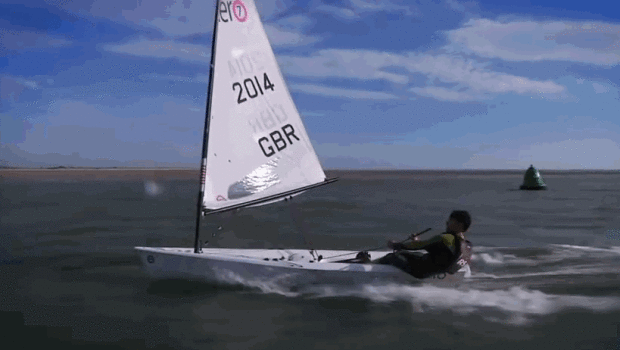


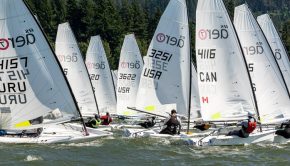
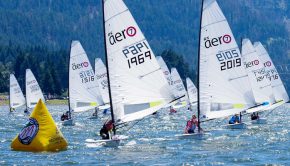
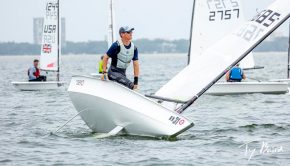
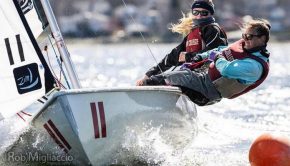
 We’ll keep your information safe.
We’ll keep your information safe.